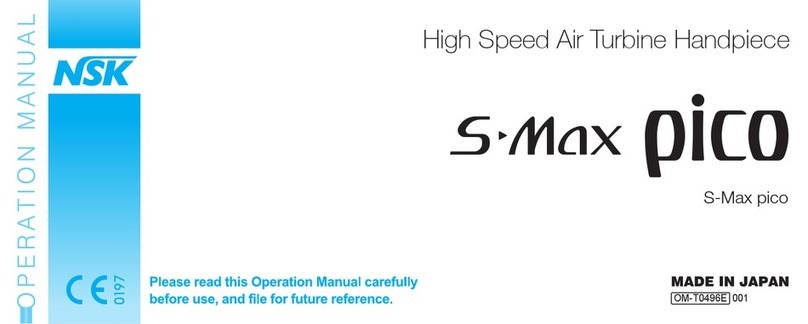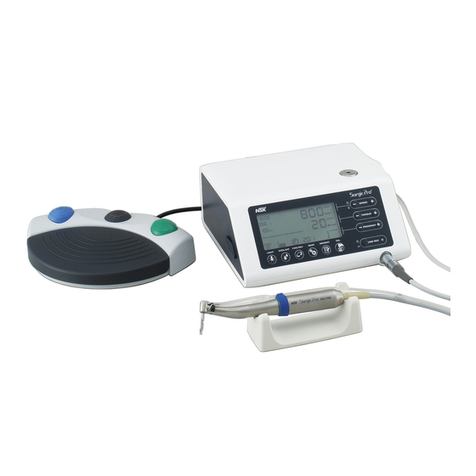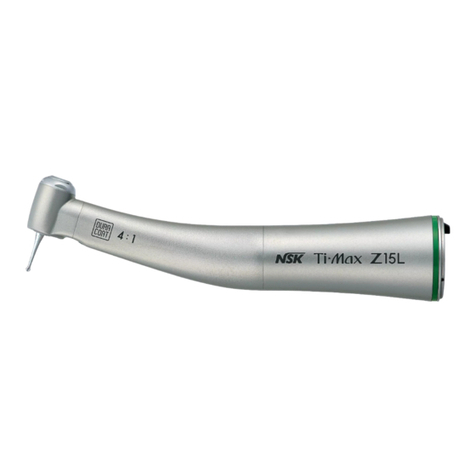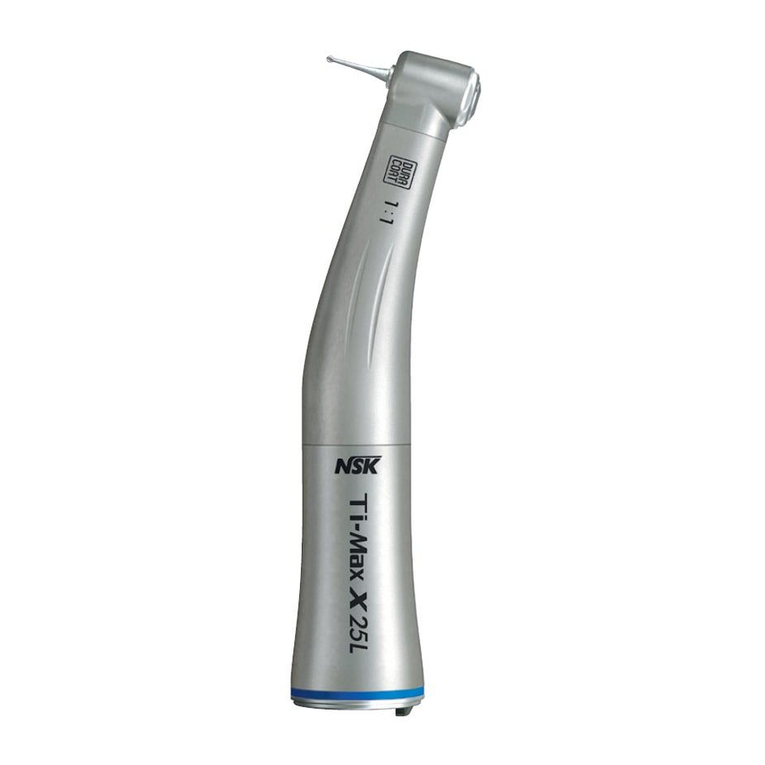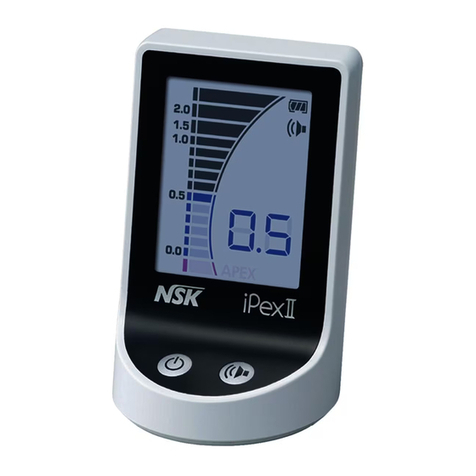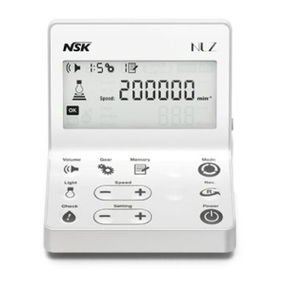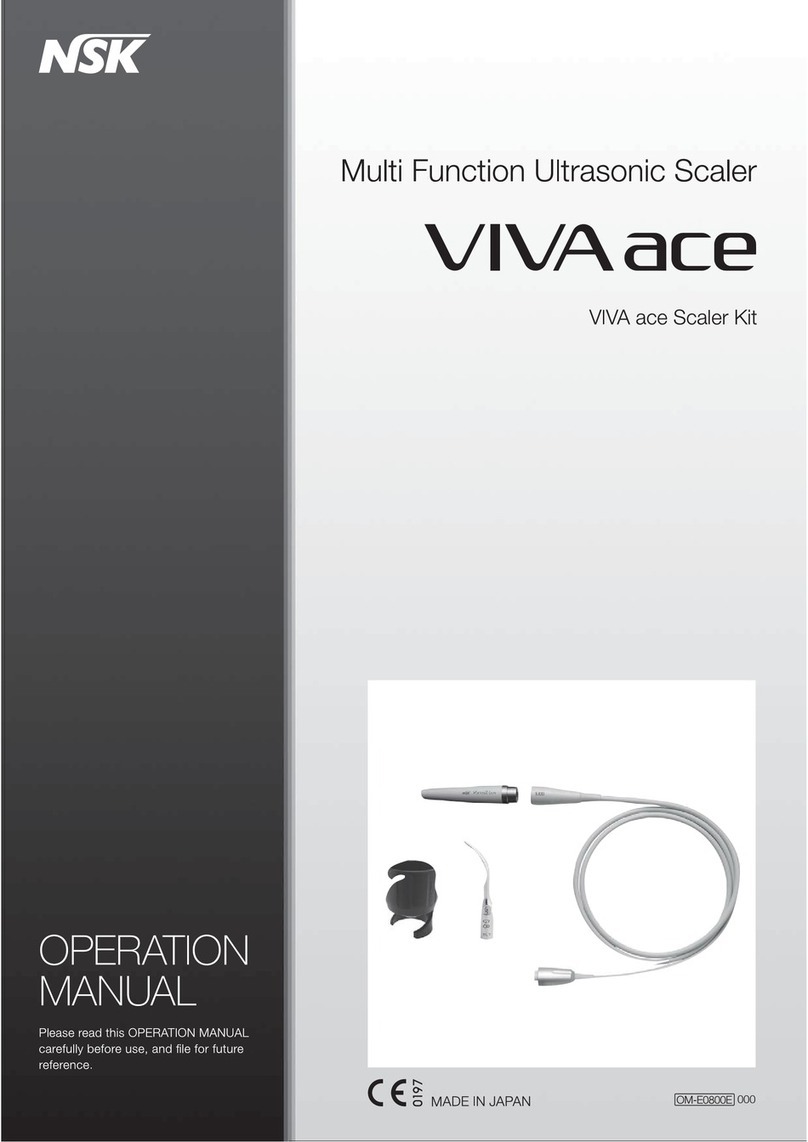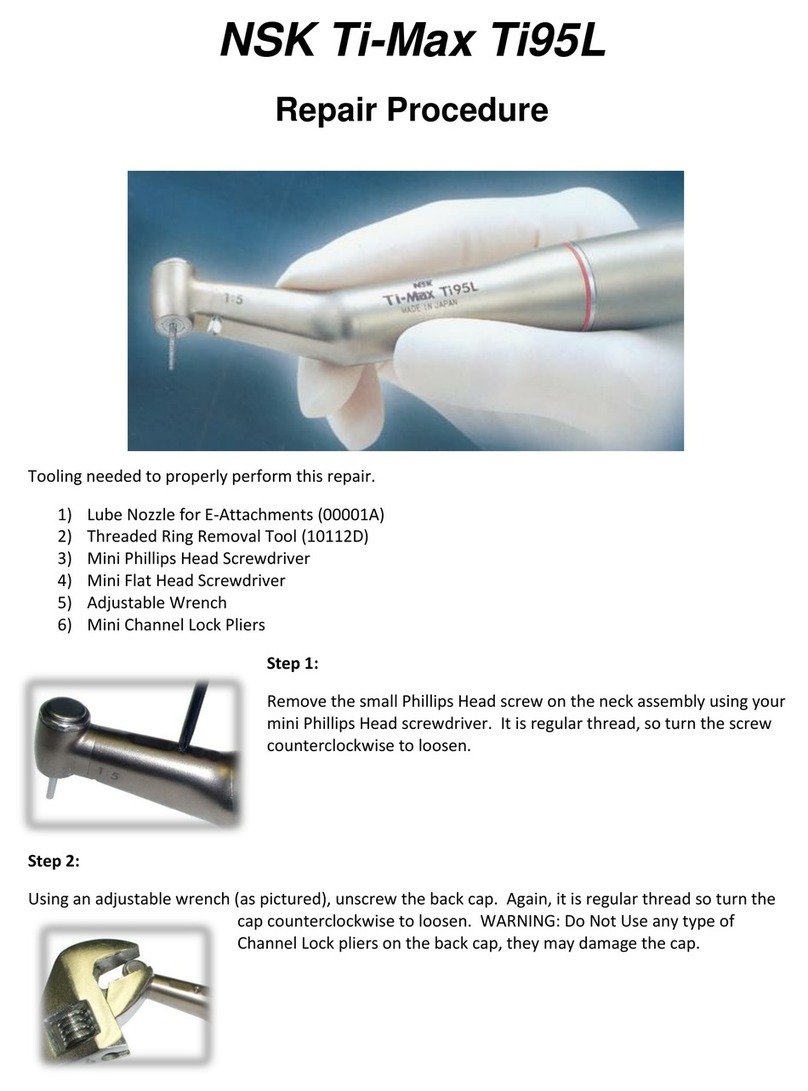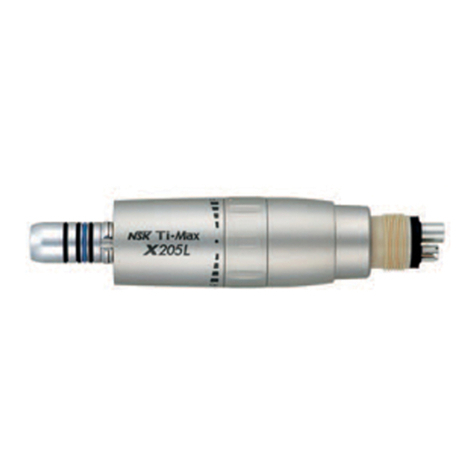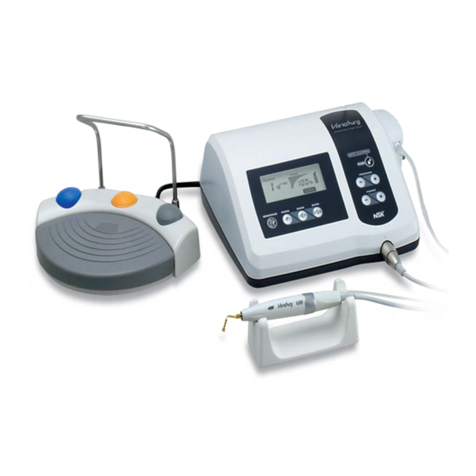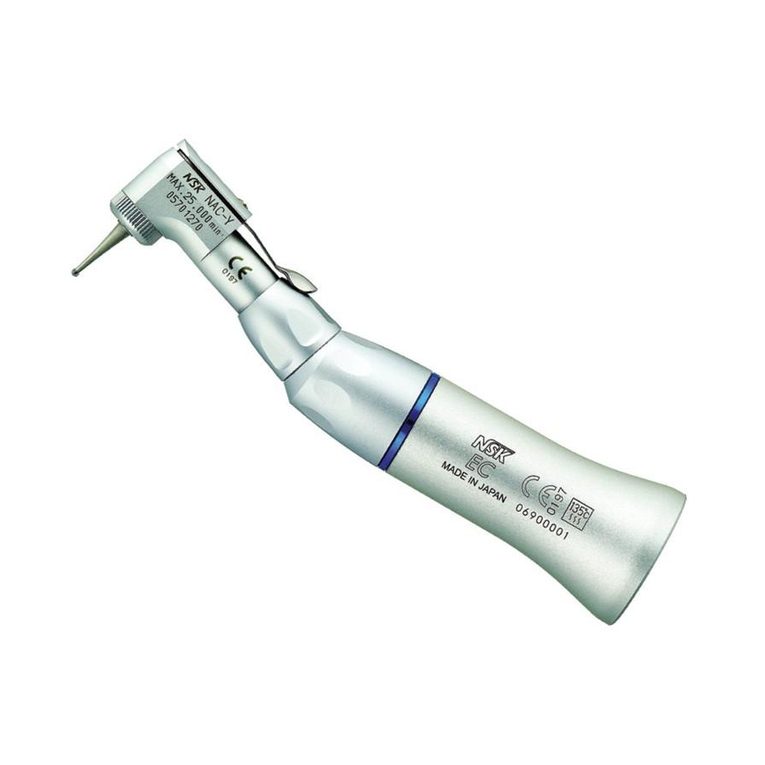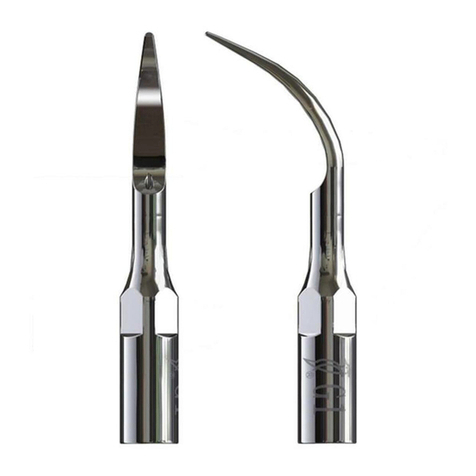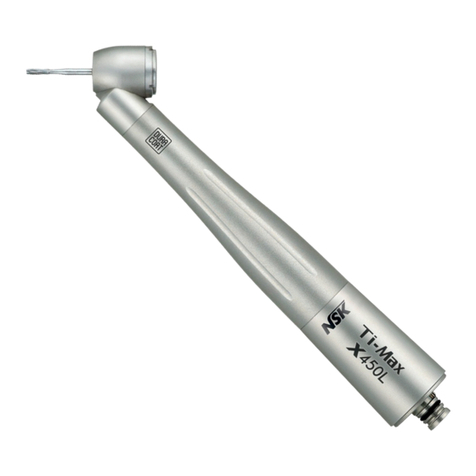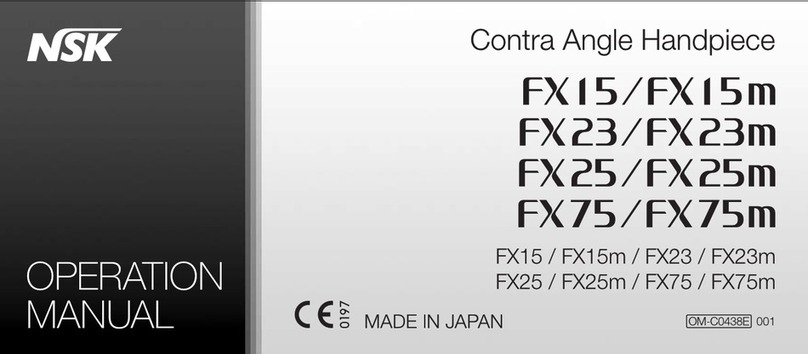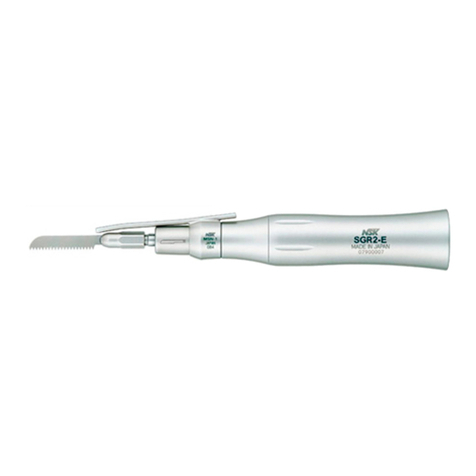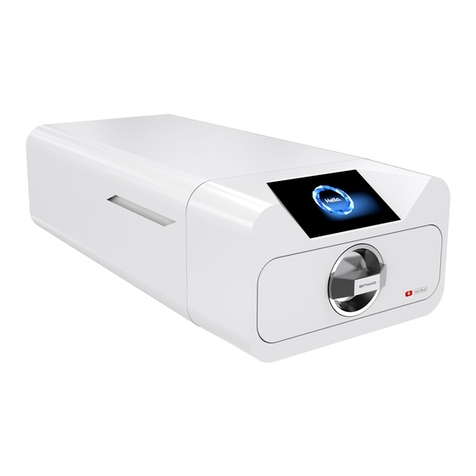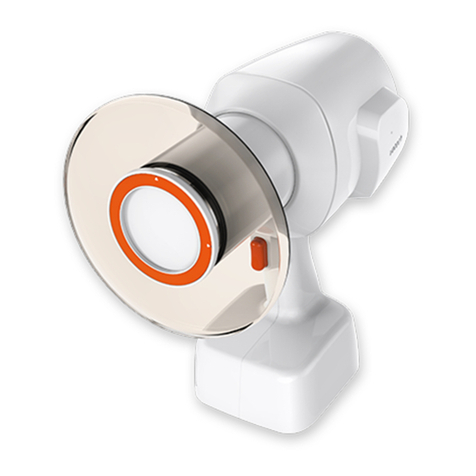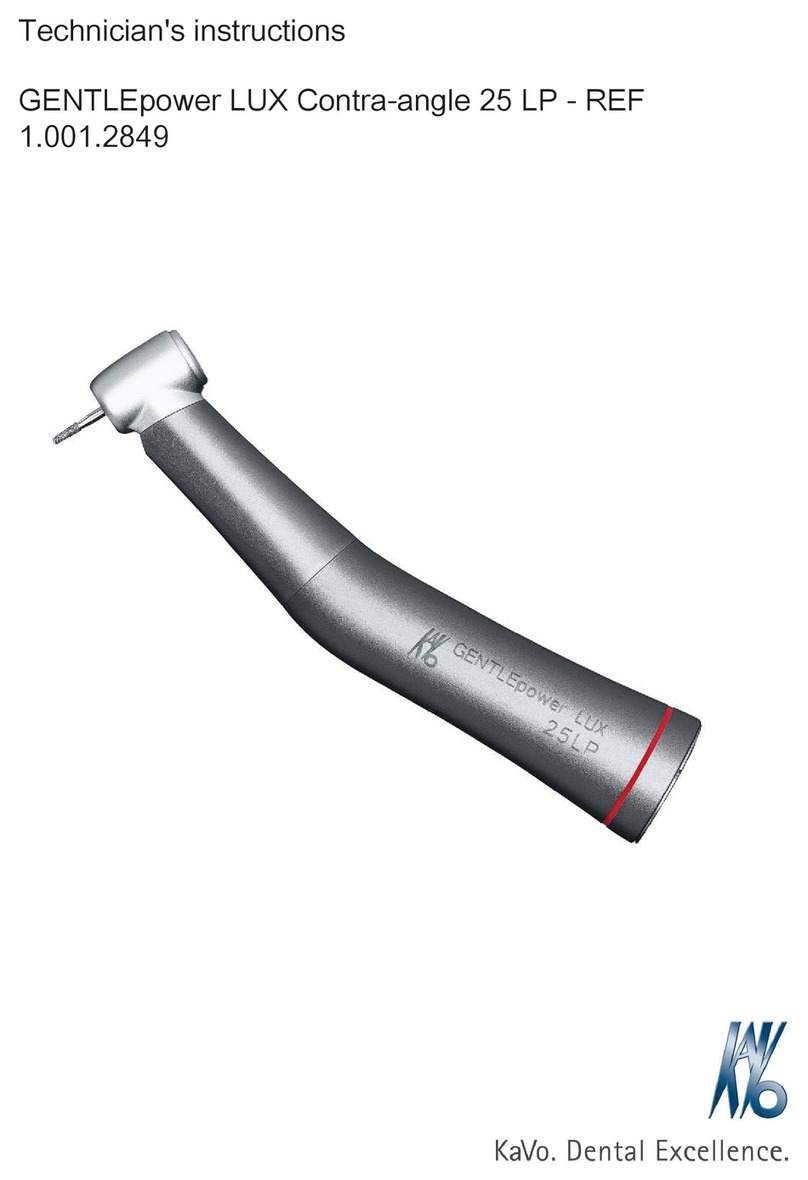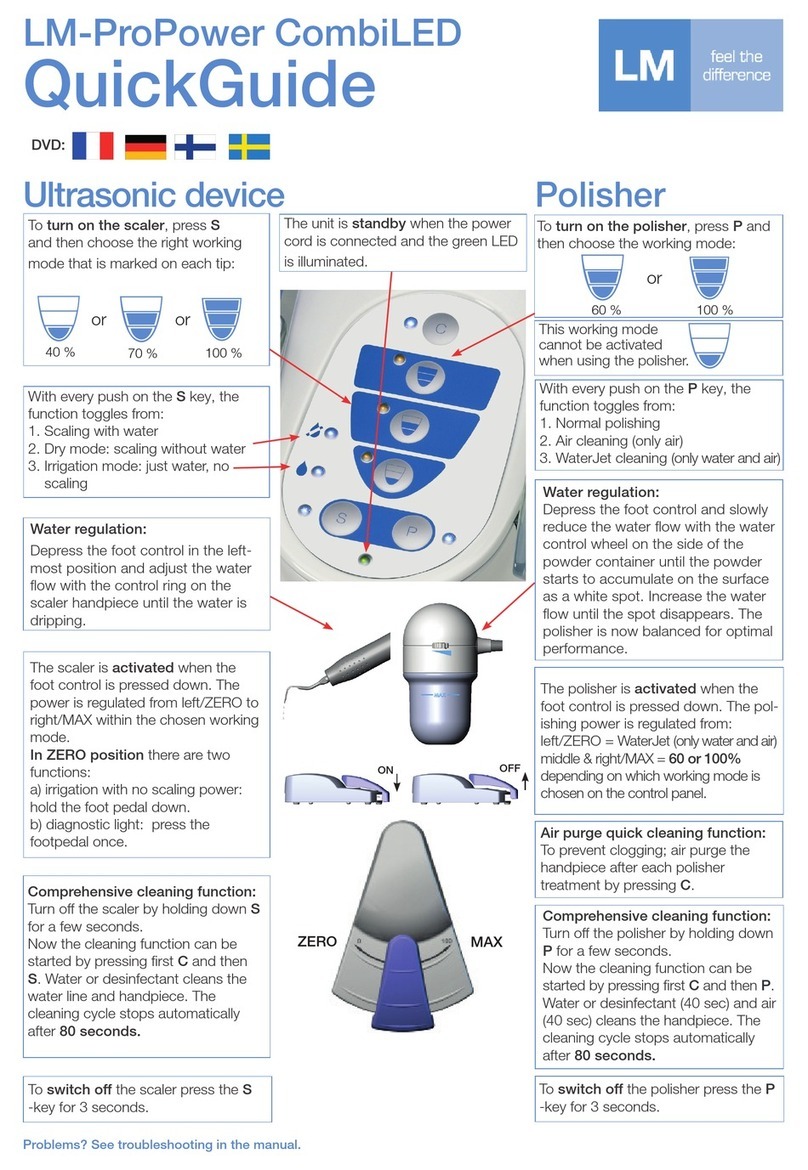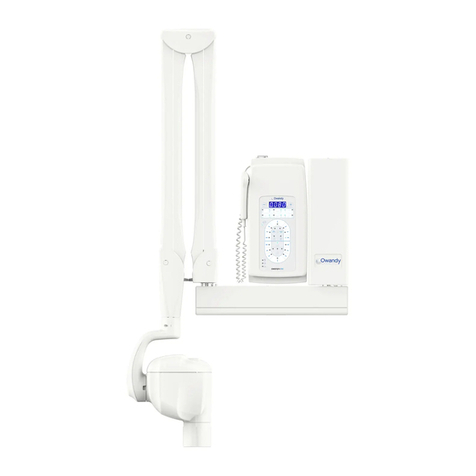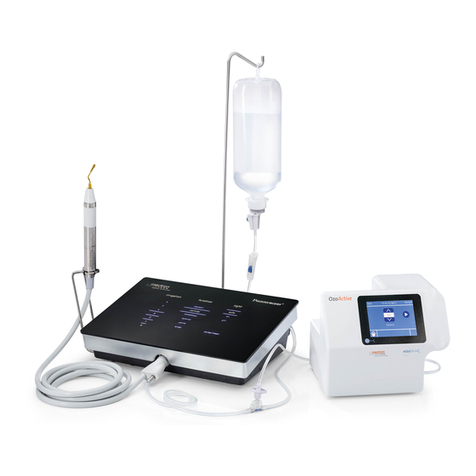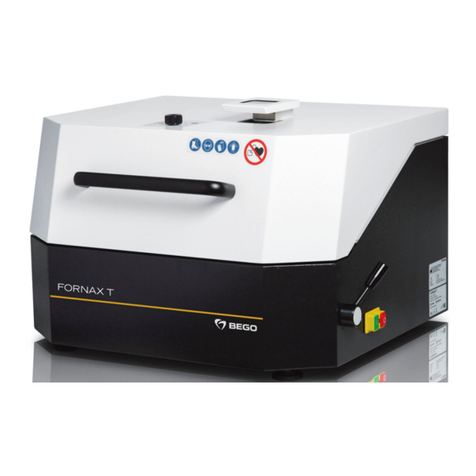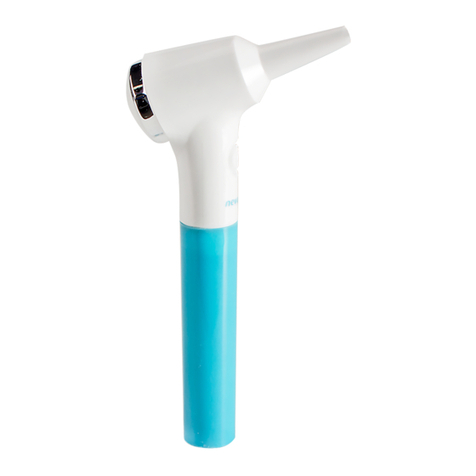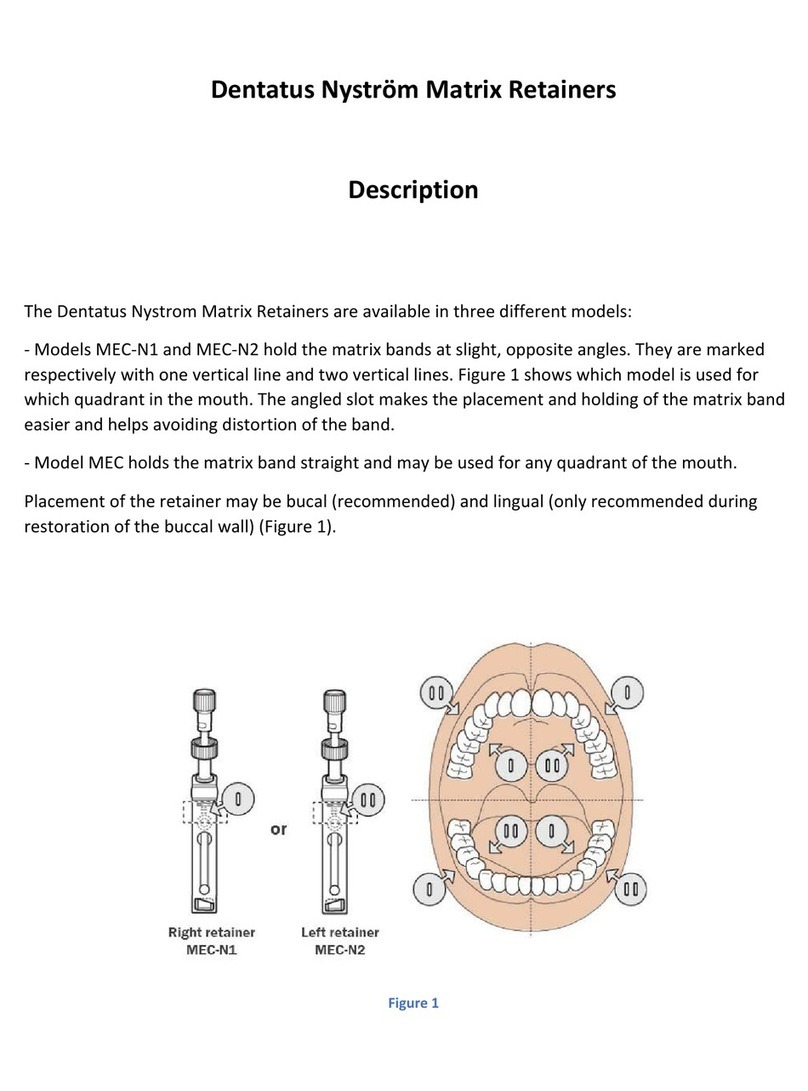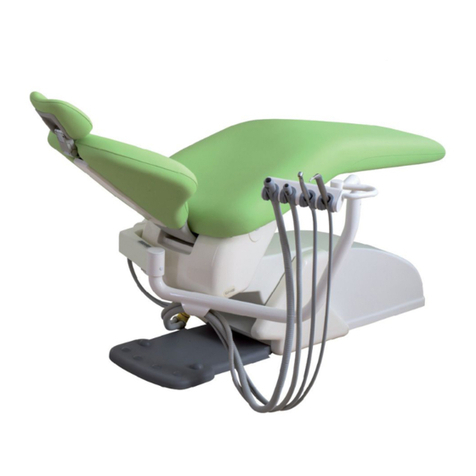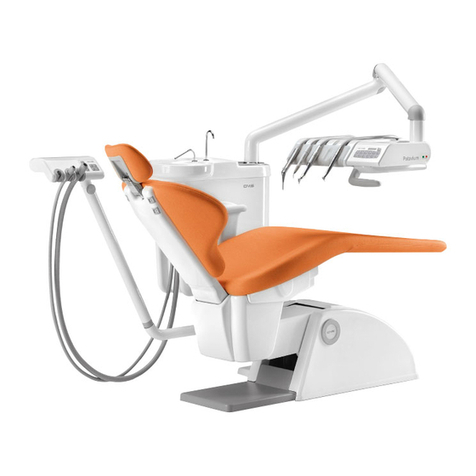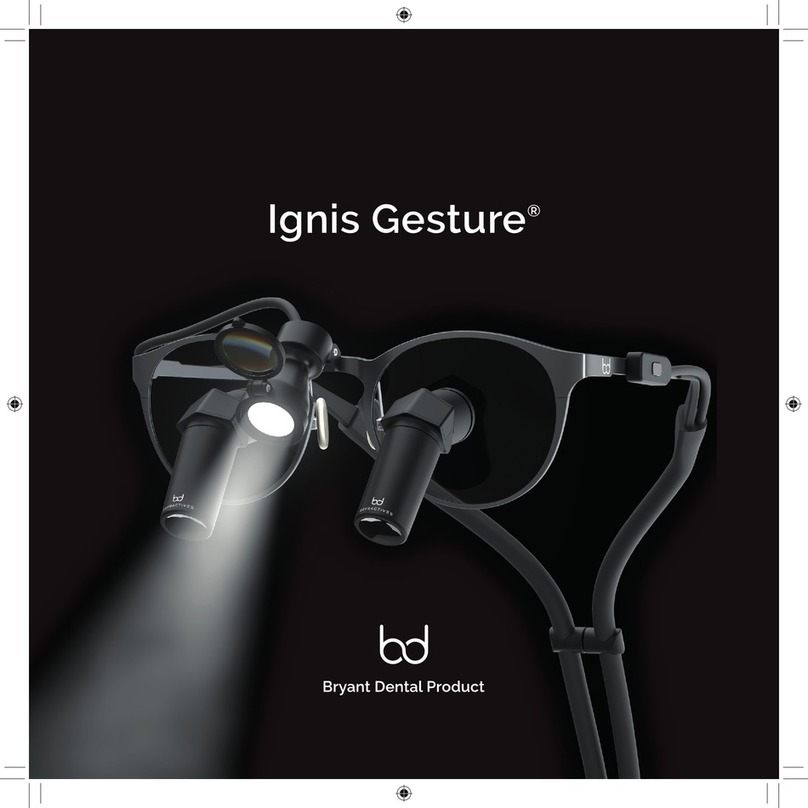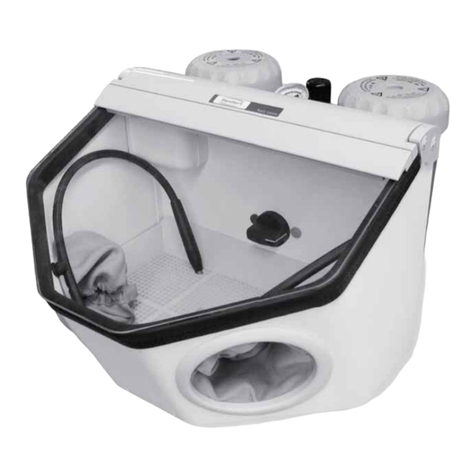
3
EN FR
CAUTION
• Do not use the following fluids to wipe, immerse or
clean the product; strong/super acid water, strong
acid/alkaline chemicals, solutions containing
chlorine, solvents such as benzine or thinner.
• Perform regular function and maintenance checks.
(Refer to "6–3 Periodical Maintenance Checks")
• To avoid clinical downtime it is recommended that a
spare be kept on hand in case of a breakdown during
treatment.
• Do not connect or disconnect the hose or handpiece
until the drive air has completely stopped.
• Do not use a washer-disinfector for the coupling.
Failure to do so may result in malfunction or electric
shock.
• Do not use air contaminated by dust, moisture or oil.
CAUTION
• Avoid continual eye contact with the LED light.
(PTL-CL-LED, PTL-CL-LED III, KCL-LED )
• This product is classified as Class 1 LED Product.
• Use a power source which meets the following
requirements.
1. The electricity supply of the power source is below
15W both under normal and single-failure
conditions.
2. The power source uses a SELV circuit for
electricity supply.
3. The output voltage of the power source is within
the range recommended by the manufacturer of
this product.
• U.S. Federal law restricts this device to sale by or on
the order of a licensed physician.



